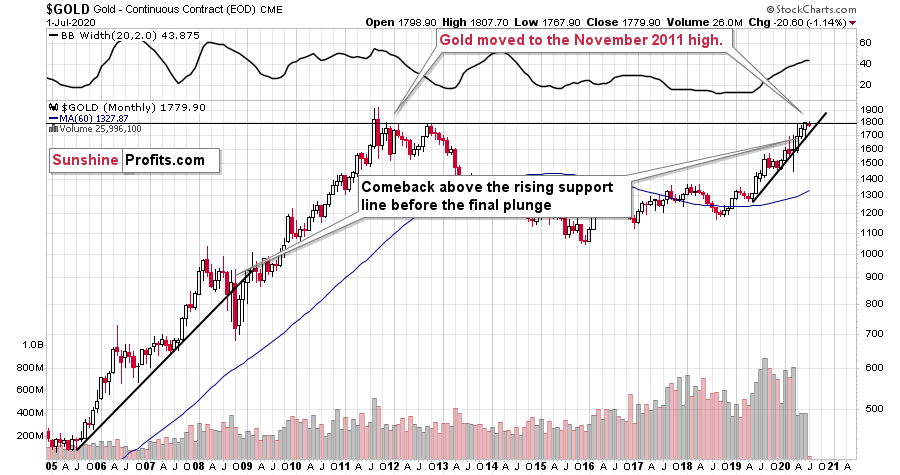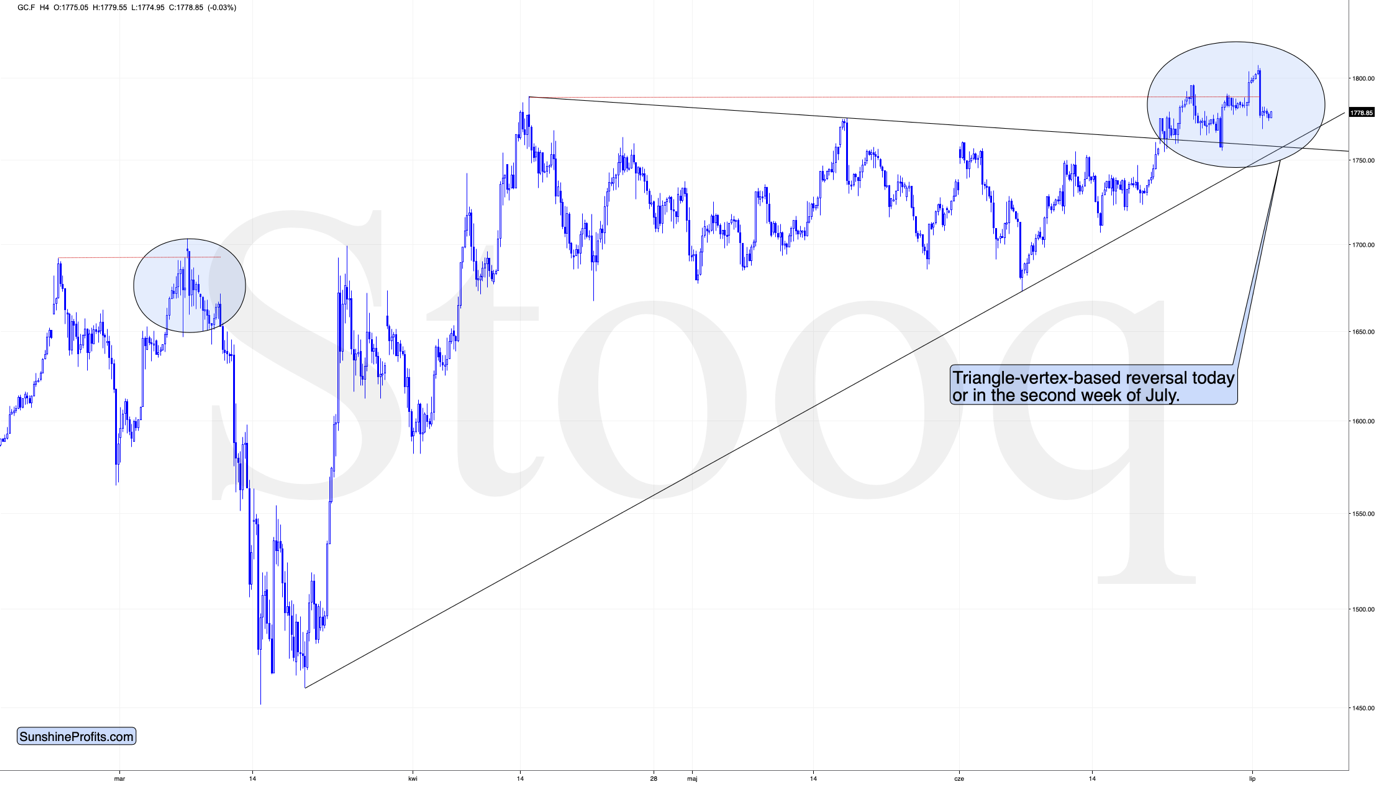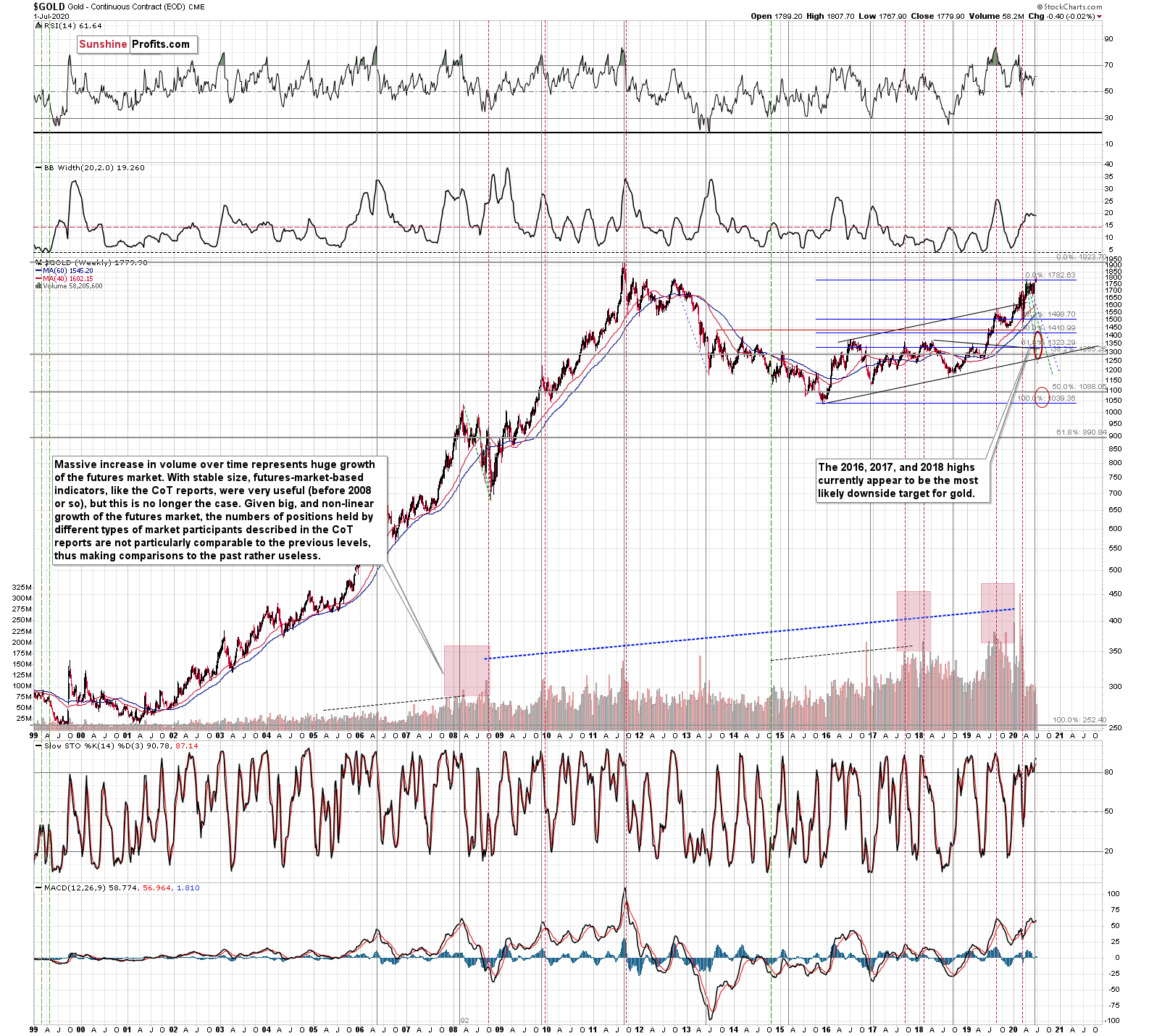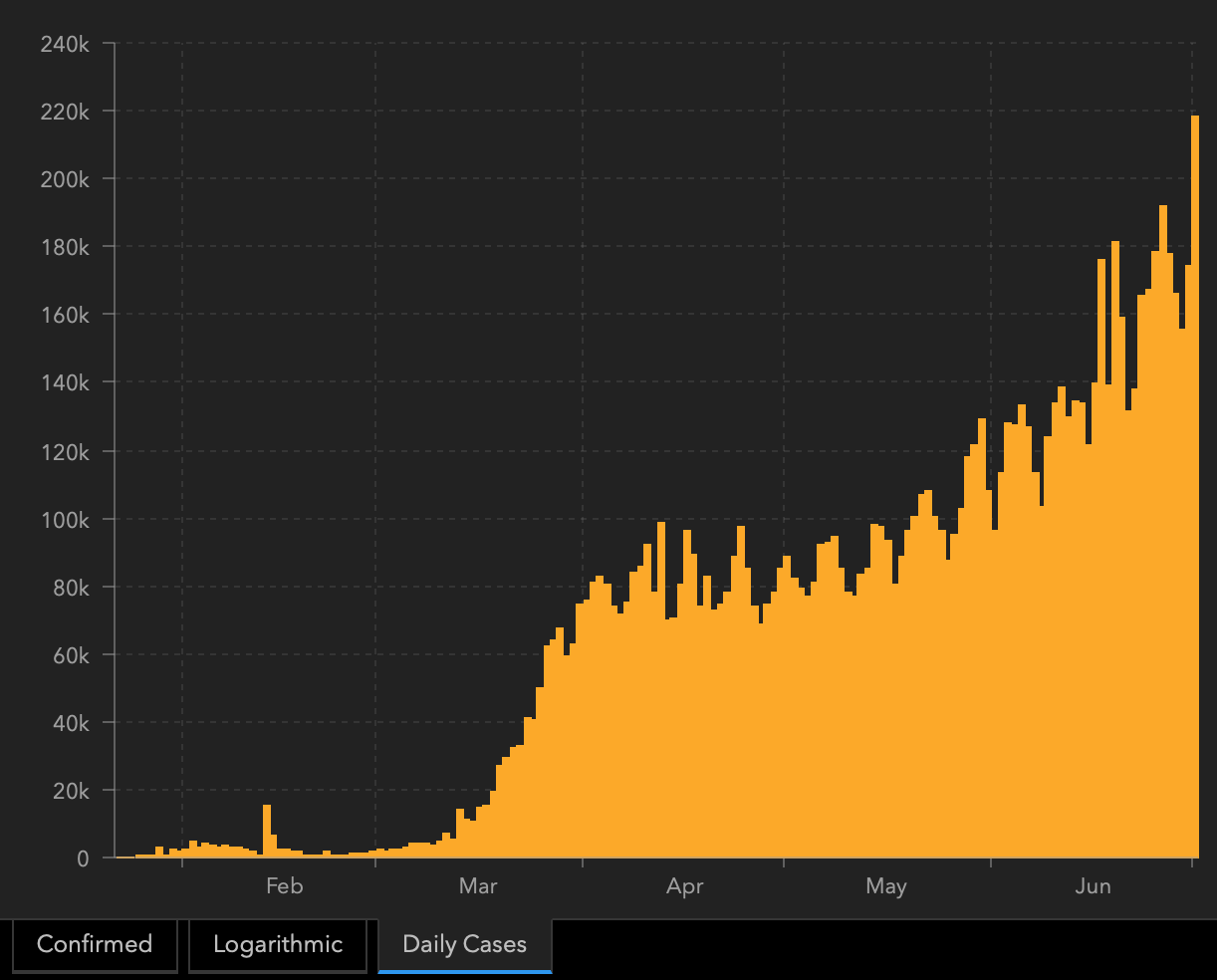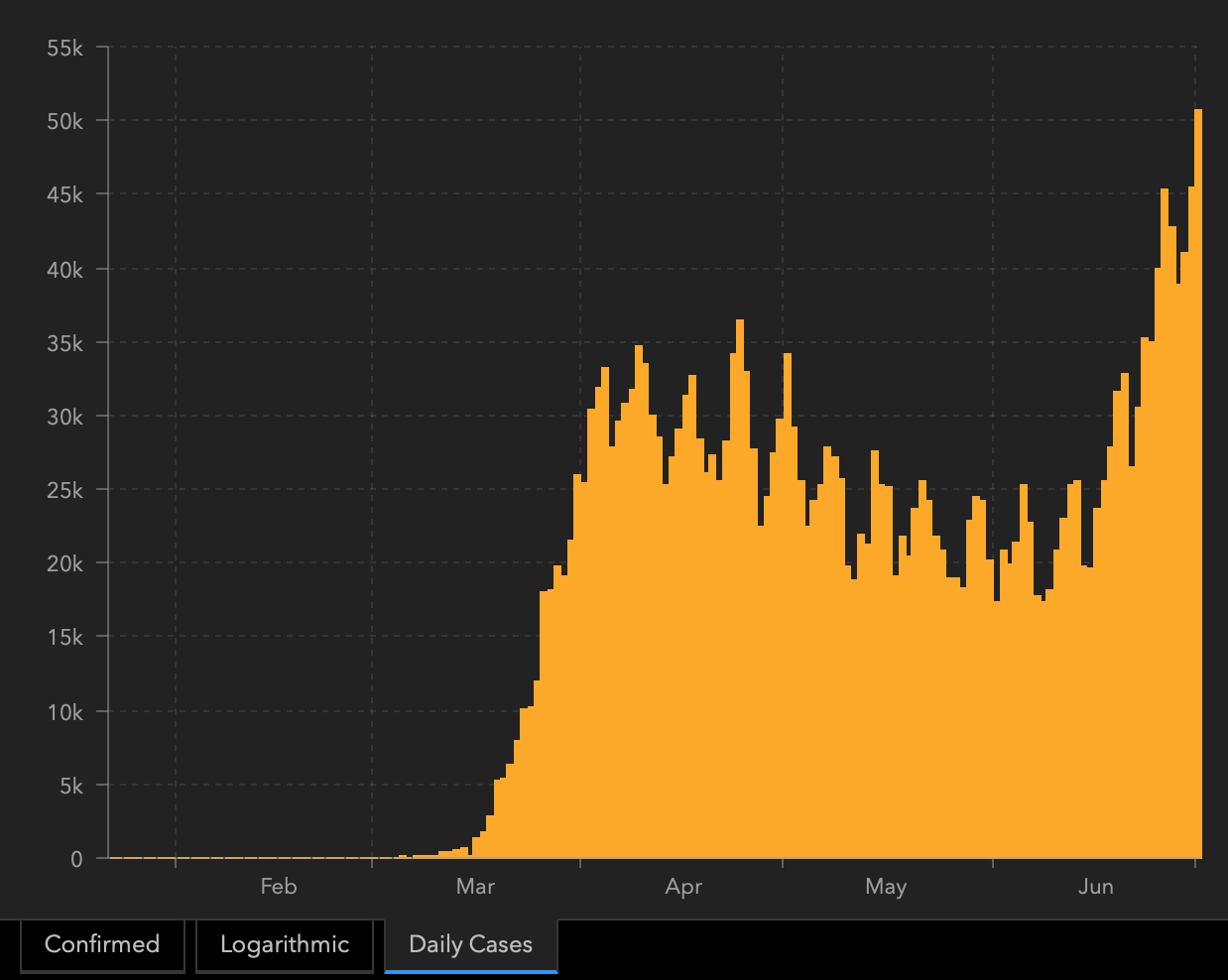Briefly: in our opinion, full (300% of the regular position size) speculative short positions in mining stocks are justified from the risk/reward point of view at the moment of publishing this Alert.
In yesterday's analysis, we wrote that we didn't trust gold's breakout above the November 2011 high and that we thought that it will be invalidated shortly. We didn't have to wait for long. Gold invalidated this breakout several hours after we posted the above.
Invalidation of a major breakout is a major bearish development and a confirmation of the outlook that we outlined previously. In particular it indicates that gold has just topped or that it will top shortly. Quoting yesterday's analysis:
Gold just moved to the November 2011 high and in today's pre-market trading it even moved above it. The volume on which gold moved up last month was relatively small, which doesn't support the bullish case, but a confirmed breakout above the November 2011 high would be an important technical development, nonetheless.
The key word here is "confirmed". The November 2011 high was $1,804.40, and at the moment of writing these words, gold futures are trading at $1,805.15 - that's less than $1 above the above-mentioned high.
The way in which gold moved between 2012 and 2020 created a near-perfect cup from the cup-and-handle formation. Generally, the bigger the base, the stronger the move, and this time the base is huge. Still, the "handle" of the pattern is still missing, and it could take form of a volatile plunge. This would be in tune with how gold reacted to the first wave of coronavirus.
The breakout above the November 2011 high is far from being confirmed, and in our view it's unlikely to be confirmed. Why?
There are multiple reasons for it, but the most precise and technical ones are gold's likelihood to reverse its direction based on the triangle-vertex-based reversal and the long-term cyclical turning point.
The resistance line, above which gold tried to break and the rising support line based on the March and June lows cross more or less in the first days of July. The triangle-vertex-based reversals have pointed to many important tops and bottoms in the recent weeks and months.
We previously wrote that the above-mentioned reversal might correspond to a bottom in gold, but as of today, it's clear that if any reversal is to take place, it's going to be a top, not a bottom, as gold's most recent short-term move has been up.
Yesterday's top took place very close to the reversal, but at the same time it was not reached precisely. Consequently, we wouldn't be surprised to see one final pop up before the slide. This doesn't have to take form of a move to or above yesterday's high - it could be a smaller move up, just like the one that we saw in the first half of March - the final move higher on the right side of the area marked with a blue ellipse.
Let's keep in mind that gold's long-term turning point is here (the vertical gray line on the chart below), which further emphasizes the likelihood of seeing a major turnaround right now.
We already wrote this previously, but it's worth restating that the rising coronavirus cases have initially (!) triggered a precious metals sell-off in March and something similar is likely to take place shortly. The sell-off started when people started really considering the economic implications of the pandemic and the lockdown, so this kind of thinking is likely to be back once the pandemic prevention mechanisms are going to be re-introduced on a bigger scale.
Please remember that the longer the authorities wait with re-introducing the social distancing measures, the worse the situation is likely to be. And it's getting worse quite fast.
We just saw a fresh high in new daily Covid-19 cases both: globally, and in the U.S..
With no new social distancing measures, this trend is likely to stay in place and the longer we wait, the worse it will be, and likely the more severe the measures will have to be taken.
And, in my view, once those measures are finally taken, the stock market and the precious metals market (initially) are likely to slide.
From the Readers' Mailbag
Q: I don't get the long term analogy on Gold. in 2008/9 gold didn't breakout of the monthly range which it did this time. As we have seen since last week it has been holding above that range. Why you still say gold is short term bearish? Fundamentally too US Covid impact being greater then EU spells weakness for US Dollar. I think this is causing trouble to Dollar index.
A: That's true - gold didn't break above the monthly range in 2008, so the analogy is not precise. However, in both: 2008 and 2020 we saw enormous economic damage, we saw sharply rising USD Index, and sharply declining stock market. And during the initial part of the move lower in stocks, precious metals declined as well. Silver and mining stocks were particularly affected. The same is the case right now.
We saw the initial wave of the coronavirus, we saw the initial decline in PMs, and we know that in 2008 there was also an initial slide that was then followed by a sharp rally. In 2008, this rally didn't take gold to new highs, and this rally did (after all, the stimulus size is unprecedented). Even though the similarity in terms of price moves is far from being precise, we continue to think that the entire decline pattern is not yet completed. The markets have yet to really react to the second wave of the virus which is already here, but the economic implications are not yet obvious, as the counter-measures are not yet fully re-introduced. Consequently, we think that just as in 2008, we will have another - more profound - slide that really ends the decline.
Q: Hi so with the delisting of several of the etfs' and the etn's dgld and dslv what do you suggest as a replacement symbol as it seems odd that they would delist these when its time for the top to blow off and go down.
Q: Credit Suisse just delisted UGLD - DGLD - USLV - DSLV.
What would be good substitutes?
A: We wouldn't view this delisting as something that indicates a top. One reason is that Credit Suisse delisted the instruments for both sides: long and short.
As far as close alternatives are concerned, we think that ProShares instruments are worth looking at. By that we don't mean that they are appropriate for everyone, and this should not be treated as an investment advice, but these investment vehicles are liquid and they provide significant exposure for the prices of the underlying metals.
The symbols are:
- UGL - 2x long gold
- GLL - 2x short gold
- AGQ - 2x long silver
- ZSL - 2x short silver
Summary
Summing up, gold stole the spotlight, trying to break above the $1,800 barrier and the November 2011 high, but this move was quickly invalidated, which served as a bearish confirmation. Gold did end the previous month and quarter at exceptionally high level, but the monthly volume was low, and it was the only part of the precious metals market that showed this kind of strength. Silver is just a few dollars above its 2015 low and over $30 below its 2011 high, while miners are trying to get above their 2016 high - well below their 2011 high. Given the above and gold's looming reversals, I think that a big decline is in the cards for the entire precious metals sector.
After the sell-off (that takes gold below $1,400), we expect the precious metals to rally significantly. The final decline might take as little as 1-3 weeks, so it's important to stay alert to any changes.
Most importantly - stay healthy and safe. We made a lot of money on the March decline and the subsequent rebound (its initial part) price moves (and we'll likely make much more in the following weeks and months), but you have to be healthy to really enjoy the results.
On an administrative note, there will be no Gold & Silver Trading Alert tomorrow, as the markets are closed in the U.S. and the trading is likely to be limited. The next regular Alert is going to be posted on Monday. Naturally, if anything major happens and/or our outlook changes, we'll send you an additional intraday Alert.
As always, we'll keep you - our subscribers - informed.
To summarize:
Trading capital (supplementary part of the portfolio; our opinion): Full speculative short positions (300% of the full position) in mining stocks is justified from the risk to reward point of view with the following binding exit profit-take price levels:
Senior mining stocks (price levels for the GDX ETF): binding profit-take exit price: $10.32; stop-loss: none (the volatility is too big to justify a SL order in case of this particular trade); binding profit-take level for the DUST ETF: $231.75; stop-loss for the DUST ETF: none (the volatility is too big to justify a SL order in case of this particular trade)
Junior mining stocks (price levels for the GDXJ ETF): binding profit-take exit price: $9.57; stop-loss: none (the volatility is too big to justify a SL order in case of this particular trade); binding profit-take level for the JDST ETF: $284.25; stop-loss for the JDST ETF: none (the volatility is too big to justify a SL order in case of this particular trade)
For-your-information targets (our opinion; we continue to think that mining stocks are the preferred way of taking advantage of the upcoming price move, but if for whatever reason one wants / has to use silver or gold for this trade, we are providing the details anyway. In our view, silver has greater potential than gold does):
Silver futures downside profit-take exit price: $8.58 (the downside potential for silver is significant, but likely not as big as the one in the mining stocks)
Gold futures downside profit-take exit price: $1,382 (the target for gold is least clear; it might drop to even $1,170 or so; the downside potential for gold is significant, but likely not as big as the one in the mining stocks or silver)
Long-term capital (core part of the portfolio; our opinion): No positions (in other words: cash
Insurance capital (core part of the portfolio; our opinion): Full position
Whether you already subscribed or not, we encourage you to find out how to make the most of our alerts and read our replies to the most common alert-and-gold-trading-related-questions.
Please note that the in the trading section we describe the situation for the day that the alert is posted. In other words, it we are writing about a speculative position, it means that it is up-to-date on the day it was posted. We are also featuring the initial target prices, so that you can decide whether keeping a position on a given day is something that is in tune with your approach (some moves are too small for medium-term traders and some might appear too big for day-traders).
Plus, you might want to read why our stop-loss orders are usually relatively far from the current price.
Please note that a full position doesn't mean using all of the capital for a given trade. You will find details on our thoughts on gold portfolio structuring in the Key Insights section on our website.
As a reminder - "initial target price" means exactly that - an "initial" one, it's not a price level at which we suggest closing positions. If this becomes the case (like it did in the previous trade) we will refer to these levels as levels of exit orders (exactly as we've done previously). Stop-loss levels, however, are naturally not "initial", but something that, in our opinion, might be entered as an order.
Since it is impossible to synchronize target prices and stop-loss levels for all the ETFs and ETNs with the main markets that we provide these levels for (gold, silver and mining stocks - the GDX ETF), the stop-loss levels and target prices for other ETNs and ETF (among other:, NUGT, DUST, JNUG, JDST) are provided as supplementary, and not as "final". This means that if a stop-loss or a target level is reached for any of the "additional instruments" (DUST for instance), but not for the "main instrument" (GDX in this case), we will view positions in both GDX and DUST as still open and the stop-loss for DUST would have to be moved lower. On the other hand, if GDX moves to a stop-loss level but DUST doesn't, then we will view both positions (in GDX and DUST) as closed. In other words, since it's not possible to be 100% certain that each related instrument moves to a given level when the underlying instrument does, we can't provide levels that would be binding. The levels that we do provide are our best estimate of the levels that will correspond to the levels in the underlying assets, but it will be the underlying assets that one will need to focus on regarding the signs pointing to closing a given position or keeping it open. We might adjust the levels in the "additional instruments" without adjusting the levels in the "main instruments", which will simply mean that we have improved our estimation of these levels, not that we changed our outlook on the markets. We are already working on a tool that would update these levels on a daily basis for the most popular ETFs, ETNs and individual mining stocks.
Our preferred ways to invest in and to trade gold along with the reasoning can be found in the how to buy gold section. Additionally, our preferred ETFs and ETNs can be found in our Gold & Silver ETF Ranking.
As a reminder, Gold & Silver Trading Alerts are posted before or on each trading day (we usually post them before the opening bell, but we don't promise doing that each day). If there's anything urgent, we will send you an additional small alert before posting the main one.
Thank you.
Sincerely,
Przemyslaw Radomski, CFA
Editor-in-chief, Gold & Silver Fund Manager


